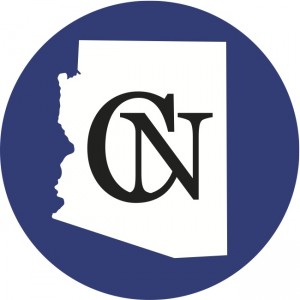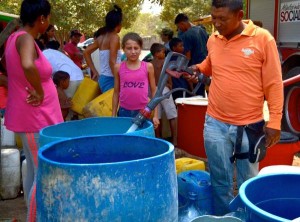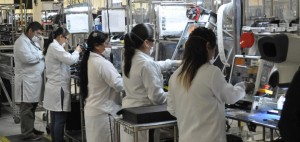By Connor Radnovich
Cronkite News Service
WASHINGTON – Only 14,069 of the estimated 80,000 Arizonans eligible for deferred deportation had applied for the federal program through its first six months, a rate much lower than the nation as a whole.
U.S. Customs and Immigration Services reported that 407,899 people had applied for the program nationally from Aug. 15 to Jan. 17, about 43 percent of the 950,000 who the Pew Hispanic Center estimated were eligible when the program began.
Advocates cite a number of reasons for Arizona’s relatively low application rate of 17.6 percent, including cost, timing, political uncertainty and Arizona Gov. Jan Brewer’s outspoken opposition to the plan.
“There were a lot of things that I think just sort of slowed it down,” said Laura Lichter, president of the American Immigration Lawyers Association. “I don’t see anything sinister here.”
And Laura Vazquez, immigration legislation analyst for the National Council of La Raza, said she is actually fairly pleased with the number of applicants so far.
“We’re off to a really strong start and we feel those (numbers) are pretty good since it’s a program that’s brand new,” Vazquez said.
The program, unveiled last summer by President Barack Obama, is aimed at illegal immigrants who were brought here as children and have stayed out of trouble since. They have to be in school or the military – or successfully finished one of those – and pay an application fee to qualify.
People approved for the program could not be deported for two years and could apply for a renewed deferral every two years.
Supporters insisted that it was not a path to citizenship, but Brewer immediately attacked it last summer as backdoor amnesty and “an outrage.” In August, she said the state would not issue driver’s licenses to program participants.
“It was really a mean-spirited attack on the program,” said Alessandra Soler, executive director of the American Civil Liberties Union of Arizona.
She said illegal immigrants already had “legitimate fears about the potential consequences of applying, because that means you have to notify the federal government of your existence,” and that Brewer’s comments could have added to those fears for potential participants.
Brewer’s office did not return requests for comment Monday.
But Soler and others said Brewer was only one of the factors that could have suppressed response in Arizona.
Regina Jefferies, head of the Arizona chapter of the American Immigration Lawyers Association, said that in addition to Arizona’s denial of driver’s licenses and the general distrust of government in immigrant communities, many potential applicants may be waiting for comprehensive immigration reform.
But she said the main reason for the low application rate could be the $465 application fee: Most applicants are low-income families and students and might not have the money.
Cesar Vargas, executive political director of the DRM Action Coalition, agreed that the fee has kept people from applying, but said that could be changing as people donate money to help applicants pay.
“The fact that there is talk about comprehensive immigration reform has generated a surge of financial support, legal support for DREAMERs,” he said of the young immigrants the program targets.
Applications have slowed from a peak of 5,715 applications per day in September to just 1,429 in January.
Applications have also fallen in Arizona, where only 1,175 applications were submitted from Dec. 13 to Jan. 17.
La Raza’s Vazquez said a main factor behind the slowing was a lack of community organizations to help people fill out applications during the holiday season.
It’s also important to note, she said, that people often have trouble coming out of the shadows and it’s a significant step that thousands have already done so.
While the number of applications has been slowing, the number of prospective applicants is growing.
The Pew Hispanic Center said the 950,000 people believed to be eligible on Aug. 15 will grow by 770,000, as young people reach the threshold of five consecutive years in the country.
Mark Hugo Lopez, associate director of the Pew center, said it’s hard to tell if the number of applications so far is a good or bad sign. He conceded that Pew could only estimate the eligible since some criteria – such as criminal convictions or school enrollment – were difficult to track.
“There might be many folks who haven’t applied because they don’t meet the criteria or they’ve committed a crime,” Lopez said.
Lichter said the low application rate could just be a matter of poor timing: When the program started in August, there was significant uncertainty around the president’s re-election.
By the time the election was decided, the holiday season had begun, she said.
And some people may simply have taken their time looking into the program to make sure they were doing the right thing, she said.
Lichter expects applications to start coming in at a faster rate in the first few months of 2013.
Statistics detailing the second half of January and early February will be released later this month.
As of Jan. 17, Californians had submitted the most applications with 110,230. Arizona was seventh, ahead of Georgia and behind North Carolina. The vast majority of applicants – 70 percent – are from Mexico, with 290,019.





